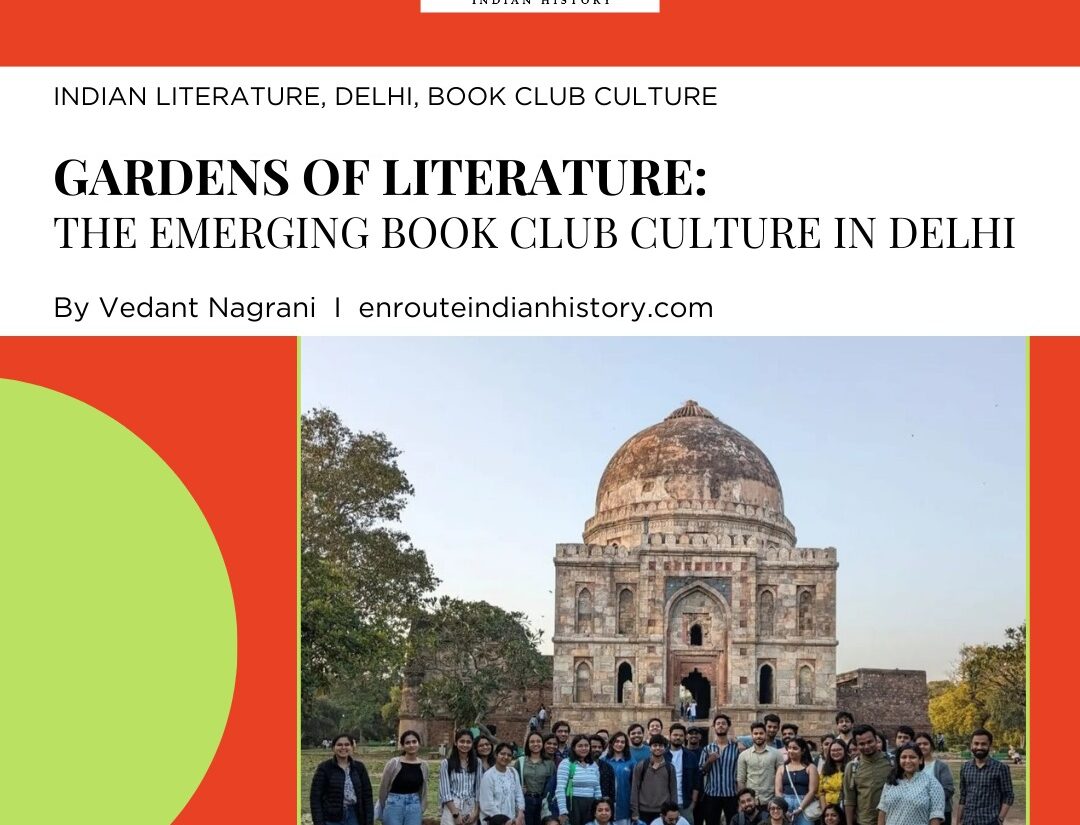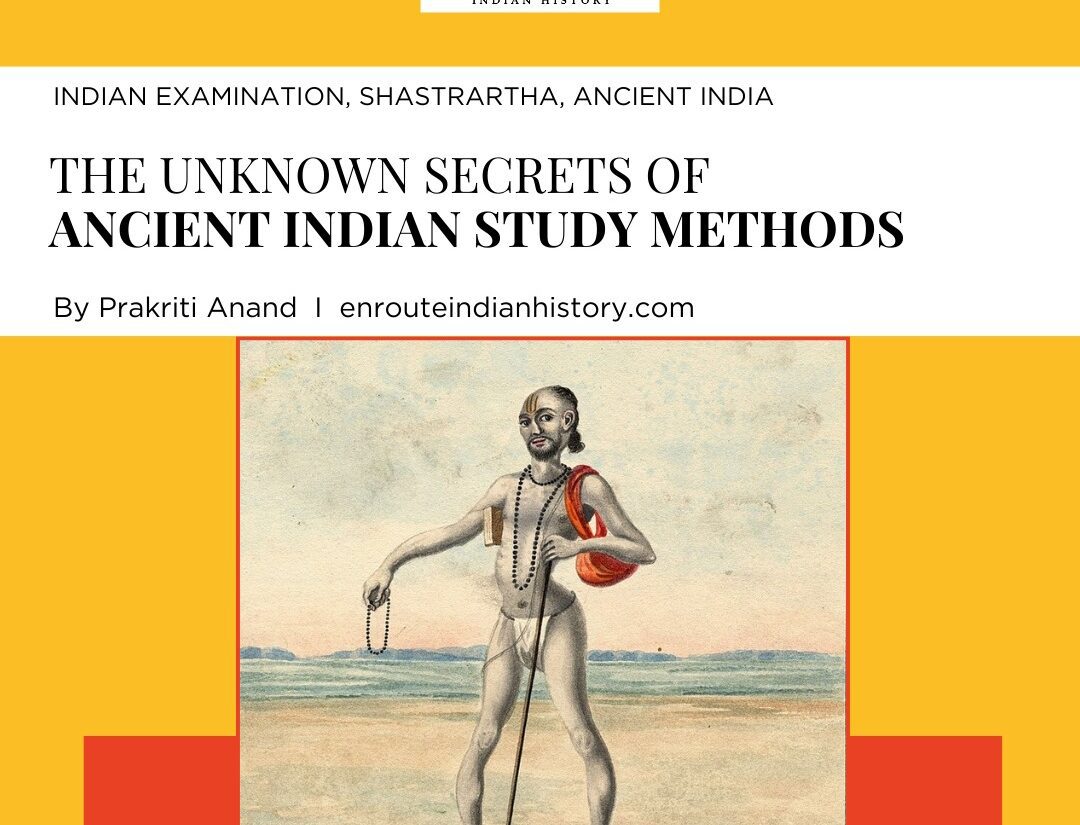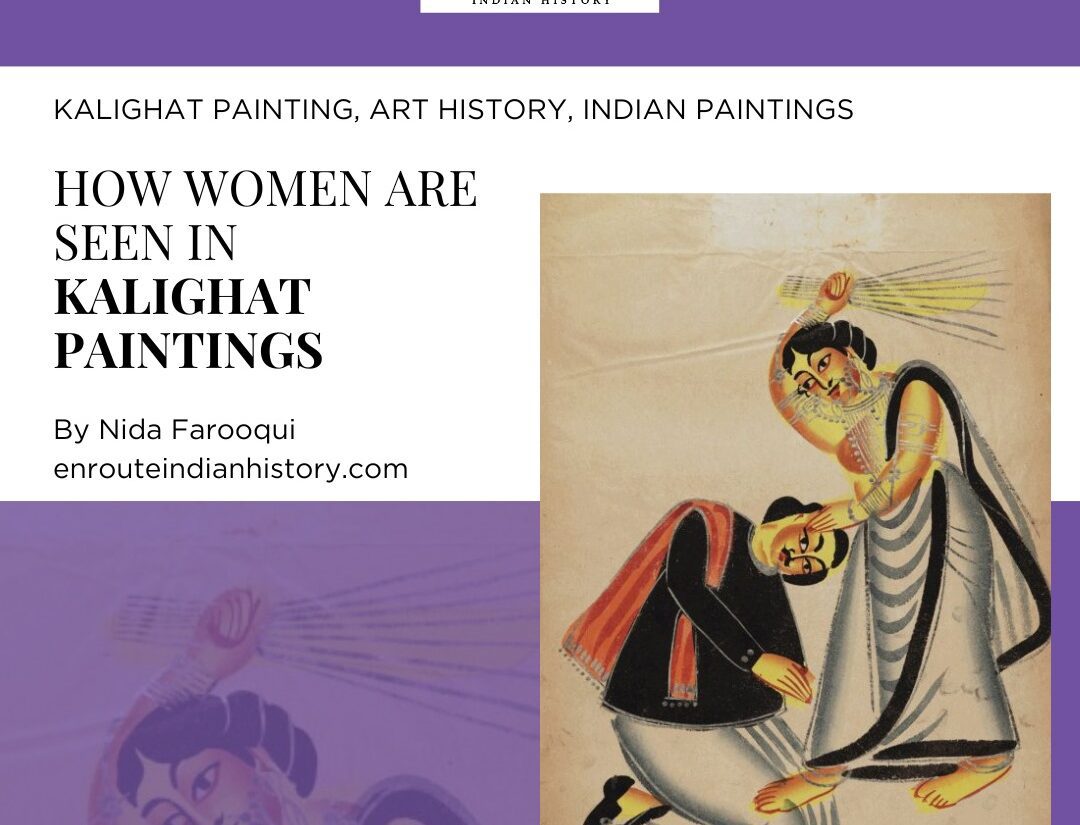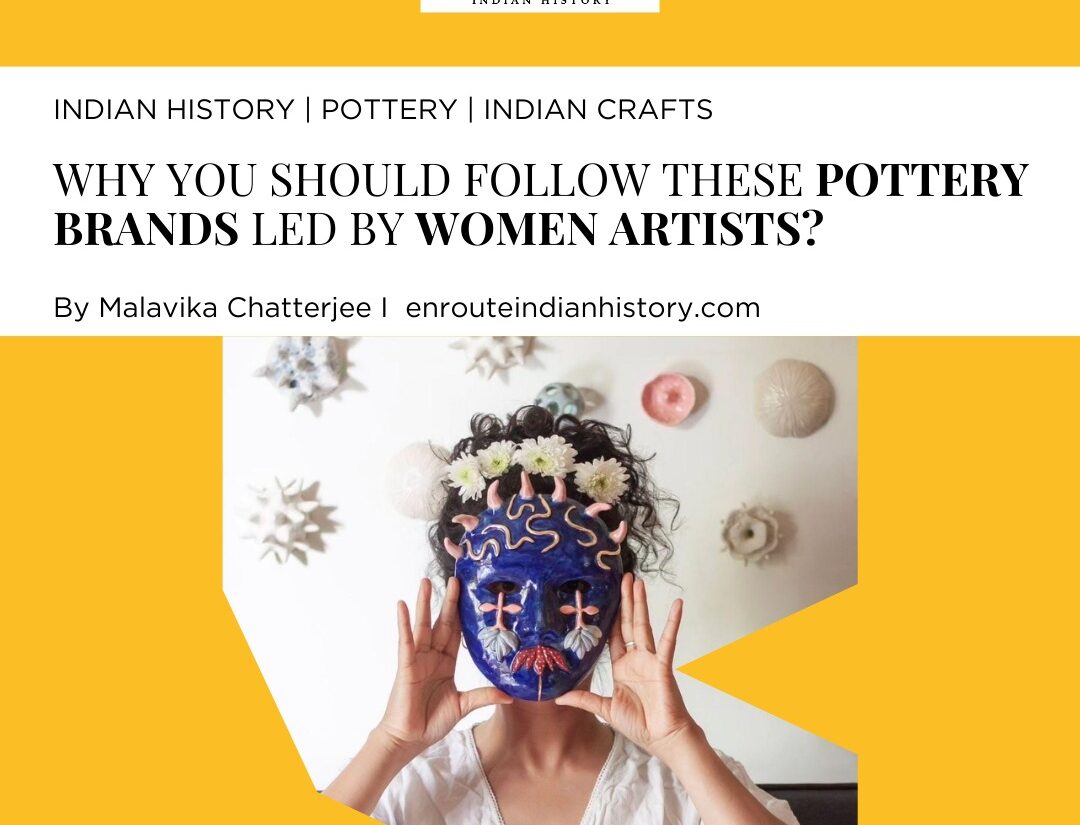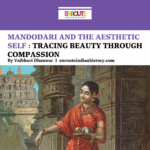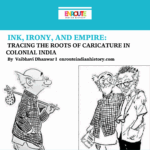How Indraprastha School became the ground for feminist activities?
- EIH User
- September 22, 2023
DELHI’S FIRST WOMEN COLLEGE – Indraprastha College
Indraprastha College for Women, famously known among the campus students for its beautiful white walls, has an unparalleled history. The first of its kind, Indraprastha College for Women is the oldest women’s college in Delhi, established at a time when education for many young girls was a distant dream. As the college marches towards its centennial year, it is a moment of pride for me to bring forth the history of this college and the narratives of the undaunted women who were so actively involved in the freedom struggle. An extensive and scholarly profound account of the college’s history and legacy already exists as a book titled – “Women, Education, and Politics: The Women’s Movement and Delhi’s Indraprastha College” by Dr. Meena Bhargava and Dr. Kalyani Dutta. I am grateful to have had the opportunity to discuss with Dr. Meena Bhargava ma’am about her experiences as a student alumni, Professor at IPCW till her retirement, and the author of the book. She told me about the anecdotes when she interviewed some of the alumni of the 1930s-1940s batch for her book in 2004-2005. Also served as one of the curators and later a coordinator of the Museums and Archives of IPCW (the first college in DU to have its archives), her words, stories, and experiences have been significant to my write-up.

(Source: Sahapedia; Indraprastha College For Women and its famous heritage building- Alipur House)
The genesis of Indraprastha College for Women (est.1924) is traced to the establishment of the Indraprastha School for Girls in 1904 or as known in the vernacular language, ‘Indraprastha Hindu Kanya Shikshalaya.’ Dr. Bhargava told me that the term ‘Hindu’ used by the founders was to distinguish the school from the missionary schools, as there was a profound fear of conversion to Christianity among the masses.

(Source: The Indian Express: Indraprastha Hindu Girls Higher Secondary School, then and now located in Chippiwara Mohalla, Old Delhi)
The school was started in a haveli, donated by Rai Balkrishna Das, in Chhipiwara mohalla of Old Delhi. It was a school thoroughly ‘Indian’ in character, aimed to demystify the myth related to the indispensibility of English in education. As a result, it was able to establish trust among the people, who were then convinced by the theosophists like Annie Beasant and started to send their daughters to School. Since the school was the first to amalgamate both the need for education for women and the concerns of the Indian society, it witnessed admissions of girls from the nearby area. Meena Ma’am, who has personally compiled all the documents that are now preserved in the archives told me that “the school’s register records names of girls taking admission from the age group of 5 years to 24/25 years of age”. She told me that to instill the idea that women’s education is non-negotiable, one of the founders Lala Jugal Kishore, became the first of his kind to send his daughter-in-law to school. Such a step was an example in itself. Thus, the School became the seedling for the Indraprastha College for Women which was inaugurated in 1924.
The Indraprastha College for Women started as an intermediate college within the same Chippiwara haveli in 1924, with Ms. Leonara G’meiner as its founder principal and seven students as its first graduating batch. Ms. Leonara was an Australian theosophist who obliged the request of Annie Beasant and came to India along with her niece. She became the principal, first of the school and subsequently of both the school and college from 1924 to 1934. During Ms. Leonara’s term as a principal, a search for a new college building in the Civil Lines started. The Alipur house that used to be the residence of the then-British commander-in-chief was narrowed down as a suitable place. However, despite the British government’s promise, the authorities had to struggle for a decade. The Alipore house was finally handed to the college authorities during the tenure of Principal Kalavati Gupta, who inherited the seat from Ms. Leonara. The acquisition of the Alipore house was made possible with the help of Lady Linlithgow and was formally inaugurated by her on 7th February 1939. The Alipore house was purchased for an amount of Rs.1,25,000 and was a British commander-in-chief’s residence, designed by the British architect Walter George. The White building of IPCW which has become so popular is the Alipur house which has been declared a heritage building. The current staff lounge used to be the Ballroom of the then-British residence. When the house was acquired, the joy of the young women knew no bounds. As Meena Ma’am told me, there was a financial crunch in the college so the students used to reach out early and clean the nettles themselves.
When asked whether IPCW would have ventured on a different path if shifted closer to the University campus, Dr. Bhargava replied: “I think that time Ms. Leonara and Ms. Kalavati Gupta wanted it to be in Civil Lines, the location of IPCW adds to its distinctiveness”. She told me that in her term as a Union advisor in the 1990s and 2010 of the College, the union raised questions like why the College has not turned co-educational. or why it is not affiliated with any political union ? to which she always replied that it is important for IPCW to be a haven for women, to carry forward its glorious legacy. Its location in Civil Lines, on the other hand, didn’t disconnect itself from the University campus but at the same ensured that the Women in IPCW became liberal, rational individuals, who were able to make decisions for themselves without the interference of any outer authority, “ To do things yourself ! ” According to Ma’am, what distinguishes IPCW is the bonding which students have among themselves which might have been an indirect result of its location. A space where women became each other’s confidant.

(Source: IPCW website; Miss. Kalavati Gupta, Principal from 1934-1942)
Indraprastha College for Women, the first women’s college in Delhi, inculcated a sense of being “ahead of others” among its women students. This was visible in their activities and curriculum as well. The curriculum of the IPCW had a rational mix of subjects including- five languages, homemaking subjects, and history, science, and maths. Economics was added in 1928, and in 1939, the college became the first to establish a qualified psychology dept. In that period, Indraprastha became a college to set up science laboratories for its students. Apart from the curriculum, Janak Kumari Zutshi, a lecturer of the English department started the Torch Bearer Society in 1937 which published an annual handwritten magazine called the ‘Torch Bearer’. In 1939, the magazine’s name was changed to Pradeep, then to Silohouttee, and finally to its current name Aaroh. The articles and writeups published in the magazine detail the progressive approach of these young women. The students of the 1930s lifted many inter-college debating competition trophies defeating students from co-ed colleges like St.Stephens and Ramjas. Meena Ma’am said that her interview with the 1930-1940s batch alumni revealed their spirited nature and their belief that “Women even at that time were second to none!”.

(Source: IPCW website; the designs of the Torchbearer magazine. The first design was handmade by a student in 1937)
An extraordinary example of the progressive nature of IPCW’s Women can be gauged from the time when Students demanded a swimming pool in the 1950s. In my interview with Meena ma’am she told me that when these alumni posted this request, the authorities were baffled. They could not fathom the fact that Indian women of the 1950s now wanted a swimming pool when the purdah system still existed! When the authorities refused to help, the women took the charge in their own hands and started performing Shramdaan. Financial support was provided in 1956 by the University on the condition that labor would be provided by the students. The women of IPCW did not back down and dug out the swimming pool for themselves which was then inaugurated in November 1957. Till now, Indraprastha College for Women remains the only women’s college in the entire University to have a swimming pool facility. Not only this, the mentor-mentee/Tutor-ward system which now the entire university follows was first started by IPCW in 1960 to orient the first years with the new college environment.

(Source: IPCW Heritage Calender 2018, IPCW Students performing Shramdaan for Swimming pool)
Initially, the parents were opposed to the concept of Male teachers in the college. However, by the year 1924 the prejudice waned away, as Professor Rama Deva taught Hindi, Sanskrit, and Philosophy and Pandit Nand Kishore taught music. From the 1930s, the institution also witnessed the admission of Muslim women. The first Muslim student of the College Tehzib Sarbuland Jang was the daughter of Nawab Sarbuland Jang of Delhi, who joined in 1930. Another prominent Muslim student of the college in the years 1941-1945 was Qurratullian Haider, who went on to become the celebrated Urdu novelist and Sahitya Akademi awardee. In my discussion with Meena ma’am, she told me that the accounts do not describe communal tensions within the college. Once inside the college, all women became alike and used to reside together!
WOMEN OF IPCW IN NATIONAL POLITICS.
Delhi after becoming the capital in 1911 was embroiled in a turn of fate. Suddenly political activism garnered fervor and Ms. Leonara, the first principal of Indraprastha College of Women was herself at the forefront of the Home Rule movement of 1911. The students in the later years were no less. The political activities of IPCW students were responses to British government policies. The students of IPCW responded to the call of the Swadeshi movement. Responding to the call to boycott foreign clothes in 1931, the women of IPCW organized a holi of foreign cloth in the back verandah of IPCW school. These women continued to picket liquor and foreign cloth shops and march in procession through the lanes and bylanes of Delhi. Another instance that enraged the British government was the boycott of the visit of Vicereine Doreen Linlithgow to the college in 1937. In 1933-34, the women formed the Zinnia Patrol and refused to salute the British flags and chant the slogan. The women of Indraprastha College were so actively involved in the movement that sometimes they used to cut lectures, jump over the walls to visit, and listen to Gandhi and Nehru’s speeches. In 1936-38, a student of Indraprastha College.
To defy the British government, several students at that time joined the All India Students Federation. They even established the girls’ committee to mobilize the support of young women. Sarla Sharma, a student of IPCW was a very active member of the AISF. in my interview with Meena Bhargava ma’am, she talked about the separation of education and politics. According to Ma’am, the political leaning of any union didn’t matter at that time as the goal was to counter the British. However, the college now has remained apolitical in the sense that the college does allow the students to have a rational and diverse political leaning individually but the student union of the college remains a cultural group with no association to DUSU.
However, Dr. Bhargava does recall that out of the many alumni interviews she conducted for the book, the interaction with Sarla Sharma in 2004-05 has stayed with her throughout. Meena Ma’am told me that when she interviewed Sarla Sharma Ma’am, she was in her 80’s but her enthusiasm knew no bounds. When she invited Sarla Sharma over to Lunch and told her that she would come and pick her up, Sarla refused. Even in her old age, she insisted on traveling on her own by bus. Meena ma’am added that she was awestruck by Sarla Sharma. She came out as a “Bold, undaunted and a very spirited woman, who would not change her ways for anything !, a fearless woman of IPCW”
Many women of the college who supported Aruna Asaf Ali during the quit India movement, like Rup Seth, and Vijay Mehrotra were jailed and rusticated from the college for their anti-british activities. However, their spirits did not deter and they even hoisted the tricolor flag in the jail. To protest against the arrest of the national leaders during the Quit India struggle, Sarla Sharma took out a procession of 10,000 students. A team of Indraprastha College for women stood as runner-up in the netball competition of the 1942 Olympics. However, when they returned, the news of the arrest of national leaders took over their excitement of winning, and in their felicitation ceremony where Viceriene Lady Linlithgow was present, they shouted anti-British slogans. As a result of these anti-British activities, in September 1942, the government canceled the Wheat permit of the hostels of IPCW till 1945 without any notice. Protime Mukherjee an alumni of the IPCW told Meena Ma’am that the Quit India movement turned the women into ‘miniature politicians’.
The students began the Charkha classes and by 1944, the college acquired ten charkhas. Saheli Sabha was a unit that engaged young women of Indraprastha College. During the period from 1946-1949, students of IPCW tried their best to spread communal harmony. During the tumultuous years of partition, the Social Service League of the Student Union started distributing garments and even used to grow vegetables for Refugee camp food. When Gandhi kept a fast to restore communal harmony, the students of IPCW responded to the situation, and Sarla Sharma was even detained for five weeks in Delhi’s jail and released on 17th November 1947.

(Source: IPCW Website; Maulana Azad receiving the guard of honor on college day in 1948)
After Gandhi’s assassination, the students of IPCW mourned for an entire year and on the college day of the year 1948, no grand celebrations were carried out. A simple ceremony took place with a guard of honor given to Maulana Azad. Till 1948, IPCW remained the only women’s college in Delhi offering humanities and social science courses with women taking admissions from West Punjab, Calcutta, and nearby states. Since the purdah was still in practice, women wanted admission in an ‘all-girls college’, the situation became so that there was an overflow of applicants, and many admissions were rejected. Subsequently, the need for another liberal arts women college was realized which led to the founding of ‘Miranda House’ in 1948.

(Source: Heritage Calender 2018 of IPCW; IPCW donated blankets during the Indo-China war in 1962)
In 1950 when Indraprastha College for Women completed its Silver jubilee, the occasion was graced by Pt. Jawaharlal Nehru. Subsequently, the tradition continued with prime ministers of India gracing the college. In the year 1974, Mrs. Indira Gandhi visited the college, and then in the year 1999, when the college completed its 75 years, Shri Atal Vihari Vajpayee graced the college with his presence. Over the years, eminent personalities like Dr. A.P.J Abdul Kalam have also attended events at the college. The legacy of the Indraprastha College is difficult to be spelled out in such short words but as Dr. Meena Bhargava told me, “IPCW’s legacy is carried forward through its alumni-student connection which at times begins from their department teachers”. The alumni of IPCW have left their mark in their respective fields, be it Sucheta Kriplani, who was the governor of U.P, Raj Mitroo, who in 1961 established a record for solo flying in a glider! Lotika Sarkar, who became the first Indian woman to graduate from Cambridge, UK, or Padma Bhushan Qurratulain Hyder, the renowned Urdu novelist. The list goes on and on!

(Source: IPCW Heritage Calendar 2018; Pt. Jawaharlal Nehru with Raj Mitroo, the first Indian Woman Glider Pilot)
As my college completes its hundred years of existence, my talk with Meena Bhargava ma’am has made me realize that the legacy of these white walls is kept alive through the admiration that we share for our college. As I graduate from this college as part of its centennial batch, I am proud but more grateful to those Seven women who in 1925 dared to break away from the patriarchal shackles of society and established a legacy as the first graduating batch of the first women’s college of Delhi.
REFERENCES
- Bhargava, and K. Dutta, (2005). “Women, Education, and Politics: The Women’s Movement and Delhi’s Indraprastha College”.. 1st ed. New Delhi, India: Oxford University Publishers.
- March 27, 2024
- 7 Min Read
- January 23, 2024
- 9 Min Read
- October 20, 2023
- 8 Min Read
